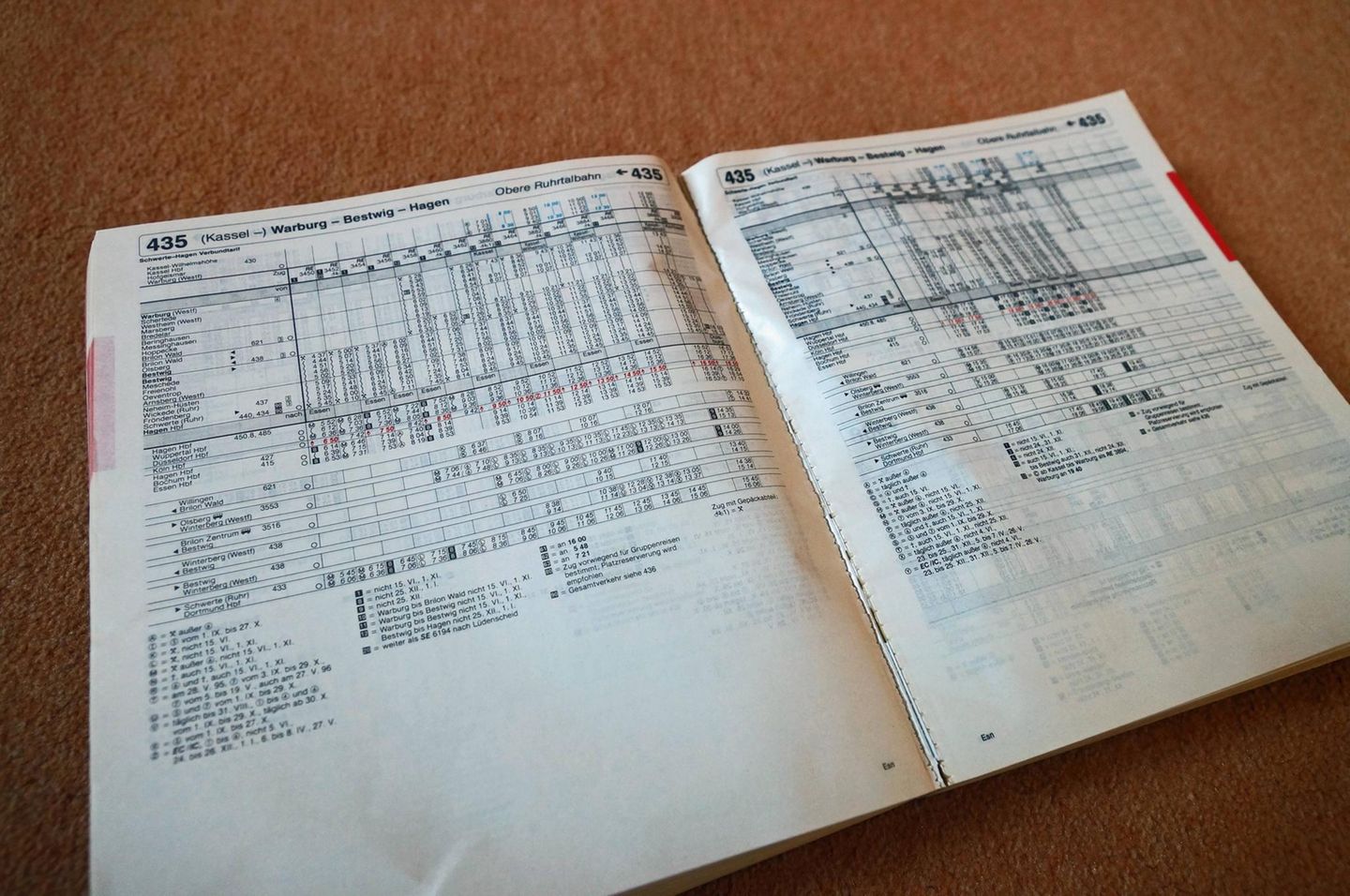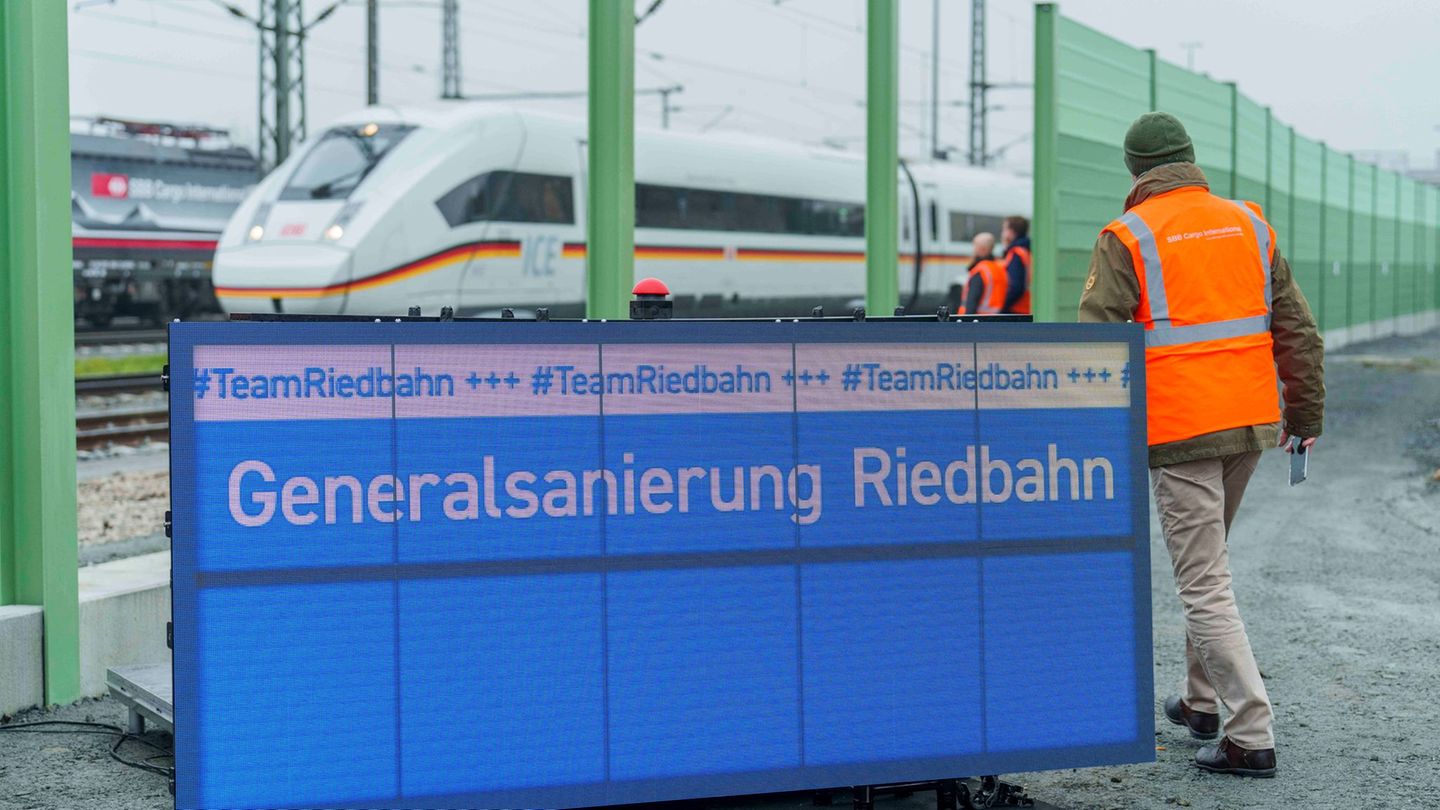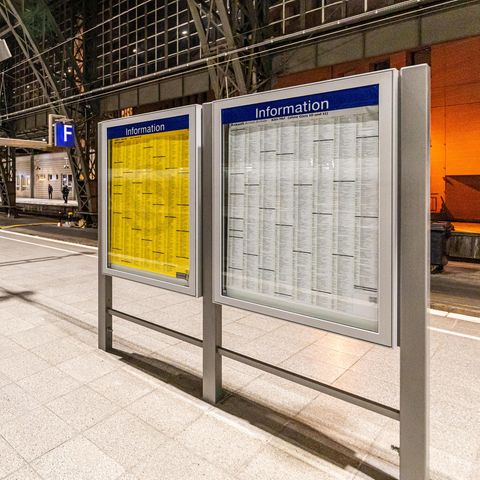German railway
Riedbahn mega construction site completed – are trains now more punctual again?
Copy the current link
It is a novelty for Deutsche Bahn: a general renovation with complete closure. The section between Frankfurt and Mannheim is now completed on schedule.
The Riedbahn between Frankfurt and Mannheim was completely closed for five months due to construction work. In regional transport, replacement buses brought people to their destination, long-distance and freight transport was rerouted. The work is now finished and the trains will be running again from Sunday. All of this has cost 1.3 billion euros so far.
Railway boss Richard Lutz and Transport Minister Volker Wissing (independent) came to the ceremonial commissioning of the line in Gernsheim, Hesse, on Saturday.
Following the example of the Riedbahn, dozens of other busy routes will have to be comprehensively modernized in the coming years – including full closures for months. The start of the pilot project is therefore being closely monitored.
What is running and what is not on the Riedbahn at the restart?
According to the latest railway information, the first train was scheduled to travel along the route shortly after midnight on Sunday – a regional express from Mannheim to Frankfurt. While long-distance traffic should operate without restrictions from Sunday, there will still be some timetable changes in freight and regional traffic, especially on the southern section of the route.
The regional train lines RB 62 between Worms and Biblis and RB 63 between Worms and Bensheim will only start operating again from December 24th. Until then, replacement bus services will continue to apply. The S-Bahn lines S8 between Biblis and Mannheim and S9 between Groß-Rohrheim and Mannheim will only then start operating again, it said.
In freight transport, trains would initially only use the route at night. The number of freight trains is expected to increase gradually until December 23rd. In total, long-distance and regional transport will be available again for around 95 percent of usual passengers from December 15th, Deutsche Bahn announced. The group now assumes that all train traffic will run as planned again from December 24th.
What was done?
The approximately 70-kilometer-long route, named after the Hessian Ried through which it runs, is one of the most important long-distance arteries in the German rail network. According to Deutsche Bahn, around 360 trains travel through the section every day. Delays caused here often affect the nationwide route network. The ICE from Switzerland and Stuttgart travel to Cologne, Hamburg and Berlin – and in the opposite directions – as well as some long-distance traffic from France via the Mannheim-Frankfurt section.
The railway has therefore extensively renovated the Riedbahn in recent months. The construction companies have replaced a total of 111 kilometers of tracks, 152 switches, 619 signals, 15 kilometers of noise barriers, 130 kilometers of overhead lines, 383 overhead line masts and eight platforms. In addition, 20 train stations along the route were renovated. Several bridges were also renovated or completely renewed.
Timetables, compartments, mascots: everything that Deutsche Bahn has abolished
Course book etc. The fate has already befallen numerous other printed timetable media. For example, the course book tome, which consists of several volumes and thousands of pages, was last printed in 2008 © Eckhard Stengel / Imago Images 
Back
Further
The route has also been equipped for the ETCS electronic train control system, which is due to go into operation gradually over the next few years.
Did the construction concept work?
The fact that the railway is completely closing such an important route for such a long period of time is a novelty. Normally, the federally owned company builds “under the rolling wheel”, i.e. while operations are ongoing. In this way, it would have taken many more years until the Riedbahn would have been completely renovated.
The so-called general renovation was announced in May 2022. It is considered necessary in order to get the rail network, which is completely ailing in many places, back into shape again and to get the railway’s hair-raising punctuality statistics under control.
This was initially successful on the Riedbahn. The replacement service for the regional trains with 150 buses ran largely smoothly. The diversions for long-distance and freight traffic also worked. Even rail competitors in freight transport had little reason to complain about the processes.
“The railway renovation concept is working. This means we are on the way to a punctual and reliable railway,” said Federal Transport Minister Volker Wissing (independent) in Gernsheim, southern Hesse, at the opening celebrations. “Many have questioned the concept of general renovation,” said railway boss Richard Lutz. “We made it.”
However, the railway has lowered one goal: instead of ten years, the line should now only remain construction-free for at least five years. The railway promises: “After the general renovation, no major construction work will be necessary on the Riedbahn for at least five years.”
Will Deutsche Bahn now be more punctual?
At least the company is convinced of this. This year, the railway’s long-distance trains are once again more unpunctual than they have been for a long time. According to Deutsche Bahn, a large part of the delays are due to the poor condition of the rail network and the associated construction work.
The renovation should “reduce disruptions due to the infrastructure on one of the busiest routes in Germany by up to 80 percent,” the railway said. However, it is questionable whether passengers will notice this from one day to the next. After all, the Riedbahn is just one of 41 busy corridors that will need to be renovated in the coming years.
What’s next?
From the point of view of many observers, the acid test of the so-called general renovation is still pending: starting next year, the long-distance route between Hamburg and Berlin is to be modernized. At almost 280 kilometers, the route is many times longer and more complex than the Riedbahn.
That’s why the construction work and thus the route closure will take significantly longer: the connection will remain closed from August 2025 to April 2026, i.e. for around nine months. Long-distance traffic will be rerouted via Stendal and Uelzen, among others. The journey times between Hamburg and Berlin are extended by at least 45 minutes. Freight trains also have to avoid the route extensively. In regional transport, the railway relies on alternative bus services.
Further corridors are to follow in the coming years. These include the Hagen-Wuppertal-Cologne routes, the right-hand Rhine route between Troisdorf, Koblenz and Wiesbaden, Obertraubling-Passau and Frankfurt-Heidelberg.
DPA
km
Source: Stern





